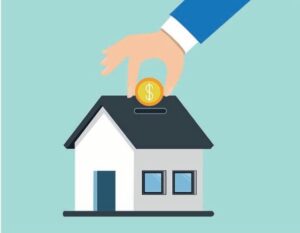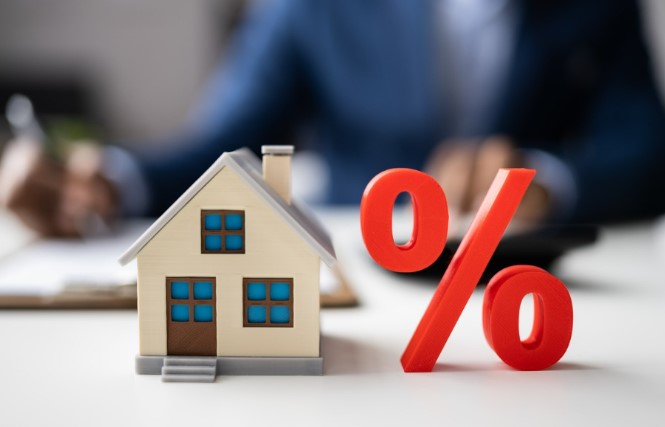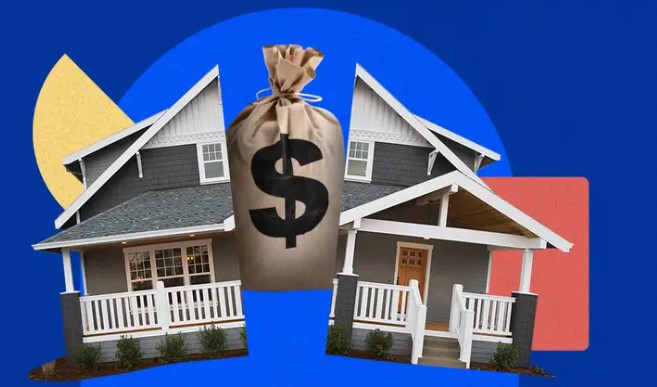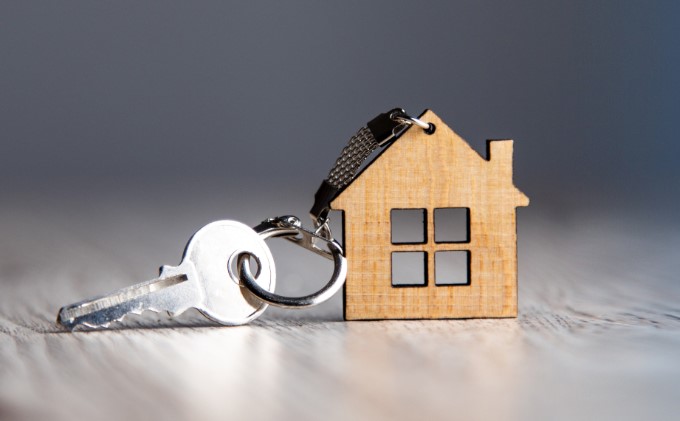Comparing the Best Mortgage Rates Available ohgame.xyz-2025
Grasping Mortgage Rates
Mortgage rates play a significant role in determining the overall cost of your home loan. They influence both your monthly mortgage payments and the total amount you’ll pay over the term of the loan. Being knowledgeable about how these rates work can make a considerable difference in your home-buying journey. Several factors impact mortgage rates, including the federal funds rate set by the Federal Reserve, the current state of the economy, and individual elements such as your credit score and financial history.

These rates are not static; they can change frequently, sometimes even daily. Hence, staying updated on current mortgage rate trends is beneficial for anyone in the market for a home loan. Economic indicators like inflation and job growth can cause fluctuations in rates. For instance, higher inflation generally leads to increased mortgage rates, while economic downturns might push them lower.
It’s also essential to understand how your personal financial situation can affect the mortgage rate you’re offered. Lenders look at various aspects such as your credit score, income, debt-to-income ratio, and employment history. A higher credit score often results in a lower mortgage rate, making it crucial to maintain good credit health.
Another point to consider is the type of mortgage you opt for. Fixed-rate mortgages offer the security of a consistent interest rate throughout the loan term, making it easier to budget your finances. On the other hand, adjustable-rate mortgages (ARMs) start with a lower initial rate that may increase over time, depending on market conditions. Each option has its advantages and drawbacks, which should be weighed according to your financial situation and long-term plans.
By comprehensively understanding these elements, you’ll be better equipped to find and secure the most favorable mortgage rate available. Always consider the broader economic context and your financial health when evaluating potential rates.
Varieties of Mortgage Rates
When you’re exploring your mortgage options, understanding the different types of mortgage rates is essential. Fixed-rate mortgages and adjustable-rate mortgages (ARMs) are the two primary choices available, each offering distinct benefits and potential drawbacks.
A fixed-rate mortgage offers stability by maintaining the same interest rate throughout the entire term of the loan. This consistency allows homeowners to budget with confidence, knowing that their monthly mortgage payment will not change. Fixed-rate mortgages are particularly appealing for individuals planning to stay in their homes for an extended period, as they provide protection against potential future interest rate hikes. Typical terms for fixed-rate mortgages range from 15 to 30 years, giving borrowers a variety of options to fit their financial situation.
In contrast, adjustable-rate mortgages (ARMs) start with a lower interest rate for an initial period, which typically ranges from 3 to 10 years. This introductory rate is usually lower than what you’d find with a fixed-rate mortgage, making it an attractive option for those looking to reduce their initial monthly payments. However, once the initial period ends, the interest rate on an ARM can adjust periodically based on market conditions, which means your monthly payments could increase or decrease over time. The adjustment periods can vary, but common intervals are annually or every few years.
One potential advantage of an ARM is the ability to save money in the short term due to the lower initial rate. This can be particularly beneficial for homebuyers who plan to move or refinance before the adjustment period begins. However, the unpredictability of future interest rate changes introduces a level of risk that must be carefully considered. It’s important to evaluate your financial stability and future plans when considering an ARM to ensure it aligns with your long-term goals.
In addition to these primary mortgage types, there are also hybrid ARMs, which combine features of both fixed and adjustable-rate mortgages. For example, a 5/1 ARM has a fixed rate for the first five years and then adjusts annually. These hybrid options can provide a balance between the initial savings of an ARM and the predictability of a fixed-rate mortgage.
Understanding these varieties of mortgage rates can help you make an informed decision that best suits your financial needs and homeownership plans.
Present Market Trends
The mortgage market is continually evolving, influenced by a range of economic indicators. Inflation is a key factor; as it rises, mortgage rates tend to follow suit, reflecting the increased cost of borrowing money. The Federal Reserve’s actions, particularly changes to the federal funds rate, are also significant. When the Fed raises rates to combat inflation or cool off an overheating economy, mortgage rates often increase in response.
In addition to domestic factors, global economic conditions can have a substantial impact. For example, international trade tensions, geopolitical events, and economic performance in other countries can affect investor behavior and influence mortgage rates in the United States. A robust global economy might push rates higher due to increased demand for capital, while economic instability abroad could lead to lower rates as investors seek safer assets like U.S. Treasuries.
Government policies, including housing and tax regulations, also play a crucial role. Policies designed to stimulate or cool the housing market can directly impact mortgage rates. For instance, tax incentives for homebuyers or changes in government-backed loan programs can alter demand for mortgages, thus influencing rates.
Shifts in housing supply and demand are another critical factor. When housing demand outpaces supply, prices and rates can rise. Conversely, an oversupply of homes can drive rates down as lenders compete for borrowers. Seasonal trends may also come into play; typically, more people buy homes in the spring and summer, potentially leading to slight rate increases during these peak times.
Technological advancements and competition among lenders can also affect the market. Online mortgage platforms and fintech innovations have made it easier for consumers to shop around, putting pressure on traditional lenders to offer more competitive rates. This increased competition can result in better deals for borrowers.
Lastly, public health crises like the COVID-19 pandemic can dramatically alter market conditions. Economic uncertainty and changes in consumer behavior can lead to significant rate fluctuations as lenders and policymakers respond to new challenges.
By keeping abreast of these diverse factors, you can better navigate the mortgage landscape and make more informed decisions about your home financing options.
Evaluating Lenders
Comparing mortgage lenders is a crucial step in finding the best mortgage rates. Start by exploring a mix of traditional banks, credit unions, and online lenders. Each type of lender may offer different rates, terms, and customer service experiences.
Online reviews and ratings can provide insights into a lender’s reputation and the experiences of previous customers. Pay attention to feedback regarding the lender’s responsiveness, transparency, and overall satisfaction.
When reaching out to potential lenders, ask for detailed quotes that include the interest rate, annual percentage rate (APR), and a breakdown of any fees or closing costs. This information will help you make an apples-to-apples comparison between different offers. Be sure to inquire about any potential discounts or special programs that may be available, such as first-time homebuyer incentives or military discounts.
It’s also beneficial to understand the lender’s application process and approval timelines. Some lenders may offer pre-approval, which can give you a competitive edge when making an offer on a home. Additionally, consider how the lender communicates and supports you throughout the process. Effective communication and customer service can significantly impact your experience and ease any stress during your home-buying journey.
Interest rates are important, but don’t overlook other aspects such as the lender’s flexibility in loan terms and their willingness to work with borrowers who have unique financial situations. Some lenders may be more accommodating in offering custom loan solutions or providing advice tailored to your specific needs.
If possible, seek recommendations from friends, family, or real estate professionals who have had positive experiences with certain lenders. Personal referrals can often lead you to reliable options that might not be immediately apparent through online research alone.
Finally, remember that your credit score and financial history will influence the rates and terms you are offered. Preparing your financial documents in advance and ensuring your credit score is in good shape can position you more favorably with lenders.
Securing Your Rate
After identifying a rate that suits your needs, the next step is to secure it through a rate lock. This agreement between you and the lender ensures that your interest rate will remain unchanged for a specified period, typically ranging from 30 to 60 days, though some lenders may offer longer terms. This can be particularly advantageous in a volatile market where rates can shift unexpectedly.
Securing a rate lock can provide stability and peace of mind, allowing you to proceed with confidence during the home-buying process. However, it’s important to be aware that some lenders might charge a fee for locking in your rate, or they may build this cost into the interest rate. Therefore, it’s essential to ask about any potential costs associated with a rate lock when comparing lenders.
Timing is also a crucial factor in securing your rate. Locking in a rate too early might result in paying more if the market rate drops before closing. Conversely, waiting too long can be risky if rates begin to climb. To navigate this, stay informed about market trends and consult with your lender to choose an optimal time to lock in your rate.
Another key aspect is understanding the terms and conditions of the rate lock. Some lenders offer a “float-down” option, which allows you to take advantage of a lower rate if market rates decrease during your lock period. While this feature might come with additional costs, it can offer extra flexibility in a fluctuating market.
Additionally, if your loan approval process extends beyond the initial lock period, you may need to request an extension. Be sure to discuss the possibilities and costs of extending your rate lock with your lender ahead of time, so you’re prepared for any eventualities.
Being proactive and thorough when securing your rate can prevent unexpected rate hikes and contribute to a smoother home-buying experience. Discuss all available options with your lender to ensure that you lock in a rate that aligns with your financial plans and market conditions.
Getting Ready for a Mortgage
Preparing for a mortgage involves several key steps that can significantly enhance your likelihood of securing the best mortgage rates. First and foremost, review your credit report for any inaccuracies and work to resolve them. A higher credit score often translates to lower mortgage rates, so it’s beneficial to ensure your credit is in top shape. Paying down outstanding debts and maintaining low credit card balances can positively impact your score.

Another critical step is to evaluate your current financial situation. Calculate your debt-to-income ratio (DTI) by dividing your monthly debt payments by your gross monthly income. Lenders use this ratio to assess your ability to manage monthly mortgage payments. A lower DTI indicates a healthier financial status and can improve your chances of obtaining favorable rates.
Saving for a down payment is also essential. A larger down payment reduces the loan amount and can lead to lower interest rates. Additionally, a substantial down payment can help you avoid private mortgage insurance (PMI), further reducing your monthly payments.
Start by collecting and organizing all necessary financial documents. This includes recent pay stubs, tax returns, bank statements, and any records of assets or debts. Having these documents readily available can streamline the application process and demonstrate your preparedness to lenders.
It’s also wise to avoid making large purchases or opening new lines of credit during the mortgage application process. Such actions can alter your credit score and DTI, potentially jeopardizing your mortgage approval or the terms you’re offered.
Consider getting pre-approved for a mortgage. Pre-approval gives you a clear understanding of how much you can borrow and shows sellers that you are a serious buyer. This step can give you a competitive edge in a hot housing market.
Lastly, establish a budget that includes your potential mortgage payment, property taxes, insurance, and any other homeownership costs. Understanding the full financial commitment of owning a home will help you determine what you can afford and ensure you are financially prepared for the long term.
By taking these steps, you can position yourself to secure the most favorable mortgage rates and embark on your home-buying journey with confidence.



